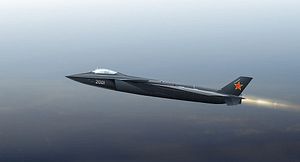Over at Air Force Magazine, Rebecca Grant has compiled a rather helpful list of “10 things Americans need to know about the People’s Liberation Army Air Force.” Given China’s moves to police its near seas in recent years, it is important to understand the role that air power might play in China’s military playbook. Since it seized the Scarborough Shoal from the Philippines, China has grown increasingly provocative in the South and East China Seas. However, it has generally done so with the use of non-naval maritime assets, including coast guard ships. The PLAAF has played a more limited role in China’s provocative episodes. With the exception of too-close-for-comfort flybys over the Senkaku/Diaoyu Islands, the PLAAF has generally sat on the sidelines.
One of the points worth emphasizing from Grant’s ten points is number four: the PLAAF is a secondary element within the PLA, comprising just 17 percent of China’s total military. The PLA, staying true to its origins as the Chinese Communist Party’s coercive arm, remains largely a ground force. As such, the PLA continues to have a “ground force-dominated culture,” says Kenneth W. Allen, a retired USAF officer and expert on the PLAAF. Another important aspect of why air power doesn’t feature at the top of the PLA’s agenda is due to the bureaucratic path dependencies of Chinese military leadership. The PLA falls under the purview of the Central Military Commission (CMC) of the Communist Party itself. As such, not only is the PLA the largest military force in the world by the number of active duty personnel, but it is the largest militant arm of a political army. Furthermore, given the PLA’s overwhelming focus on ground forces, the CMC’s leadership tends to be primarily comprised of former army officers.
To be sure, China is actively grooming its air force into a more formidable fighting force. Projects such as the Chengdu J-20 highlight the strategic and budgetary emphasis given to air power in China. Even on the leadership side of things, airmen are beginning to play a more prominent role. As Grant writes, citing an article by Oriana Skylar Mastro and Michael S. Chase here on The Diplomat:
Two PLAAF airmen entered the inner circle in 2012 when they were appointed to the Central Military Commission. One was incoming air chief Ma. More significant, in the opinions of Mastro and colleague Michael S. Chase of the US Naval War College, was the choice of outgoing PLAAF air chief Xu Qiliang to serve as vice chairman of the Central Military Commission.
Mastro and Chase described Xu as a trailblazer. He’s the first airman to take a high-ranking position amongst the CMC Army officers.
Despite these trends, air power continues to sit on the sidelines of Chinese military strategy with important implications for how China’s regional competitors should think about potentially countering Beijing’s growing military might. Analysts have been right, for the moment, to focus on China’s growing anti-access/area denial (A2/AD) capabilities, which have little to do with air power per se. In the South China Sea, Beijing has strategically chosen to limit its use to naval assets and instead opt for careful “salami slicing.” On a budgetary level, the cost-benefit ratio for China is significantly better with its A2/AD technologies than any aerial technologies (with the exception of remotely piloted aircraft).
One can imagine a major role for the PLAAF should matters escalate around the Senkaku/Diaoyu Islands. In any amphibious assault on the islands involving Chinese ground and naval forces, air supremacy would prove crucial. Japan keeps its fighters stationed at Okinawa at the ready for precisely such a scenario. To answer the titular question here, China does care about air power and is likely to care more as it continues to increase its military spending. External factors, such as the material capabilities of Japan and the United States, seem to be an important driver of the PLA’s shift from a ground force-centric military to a more diverse fighting force. As long as there are signs that the United States and Japan will remain proactive about air power (including the United States’ controversial Air-Sea Battle plans), China should care about air power.

































